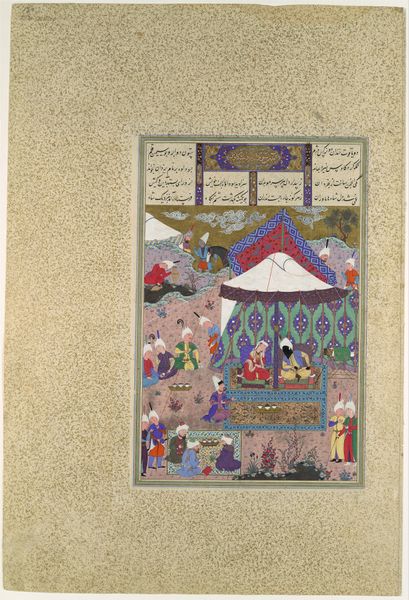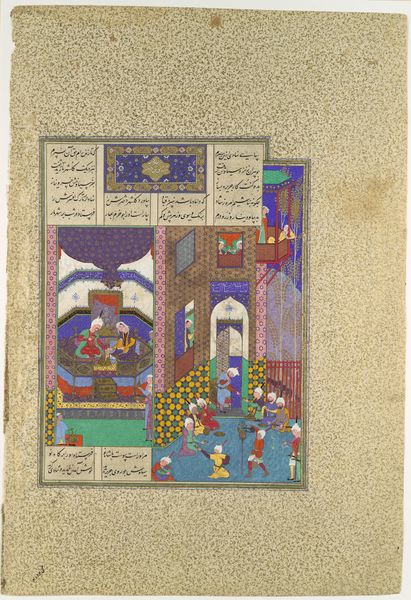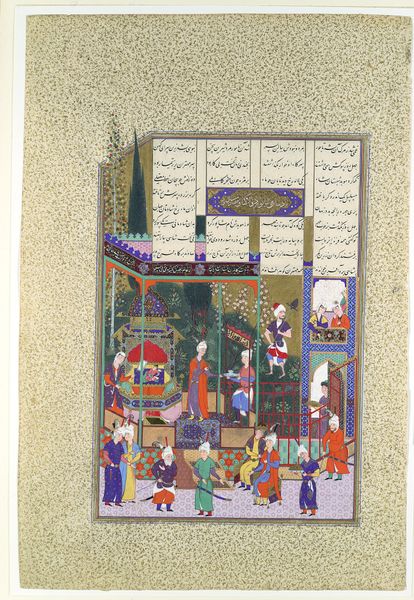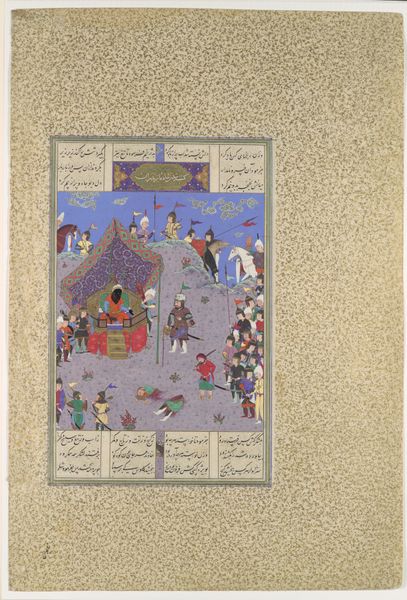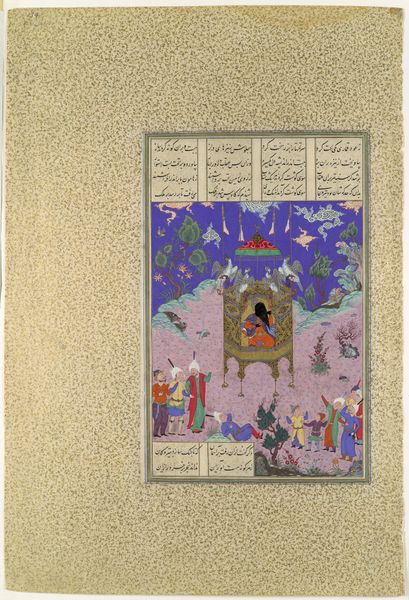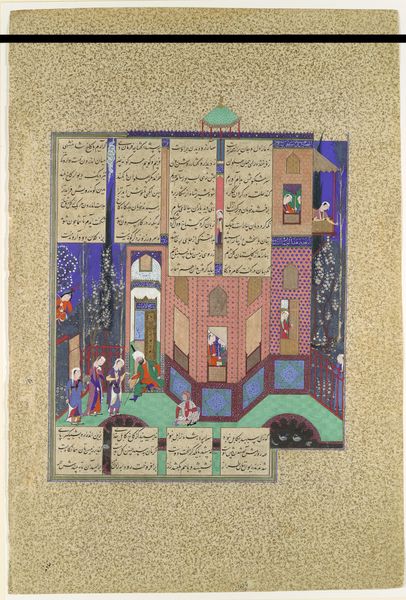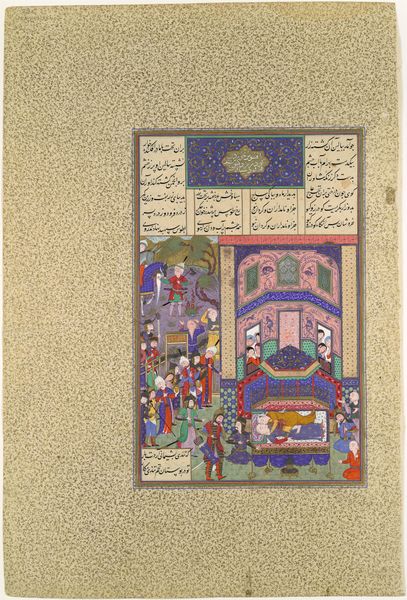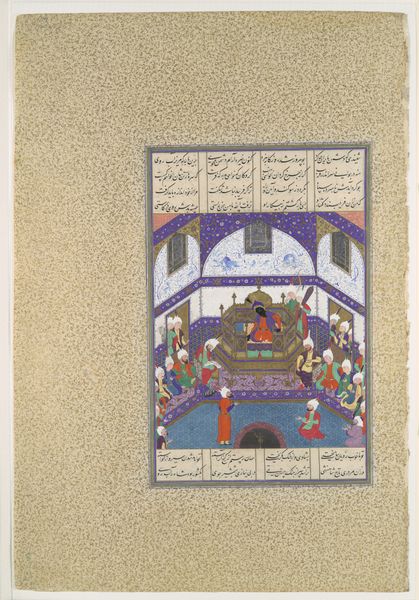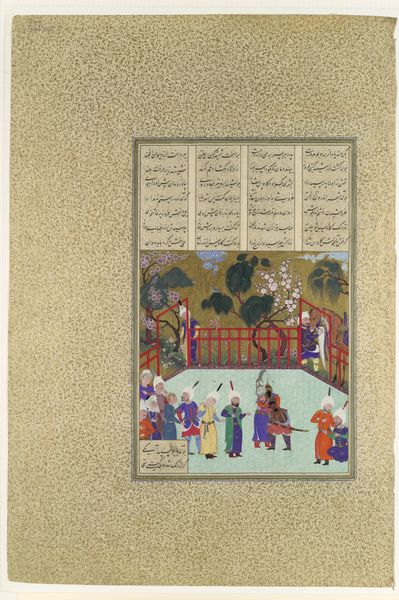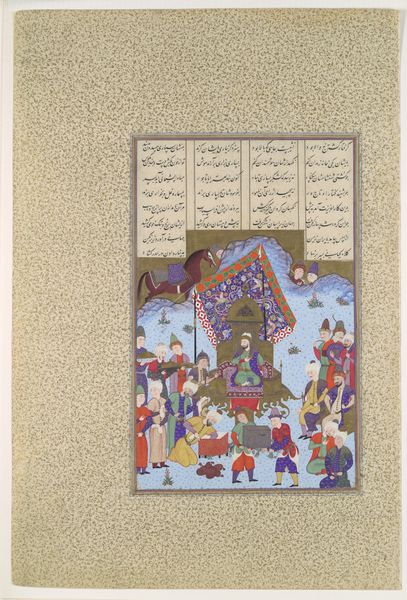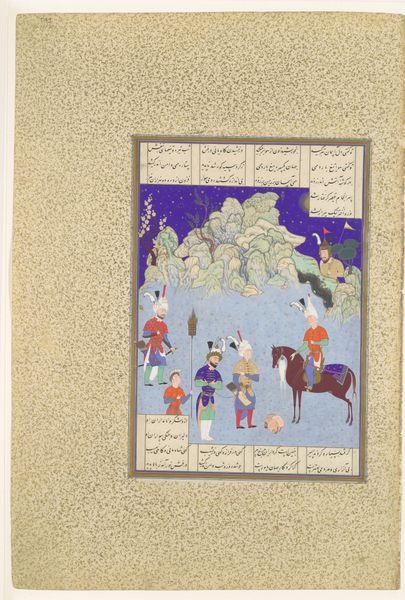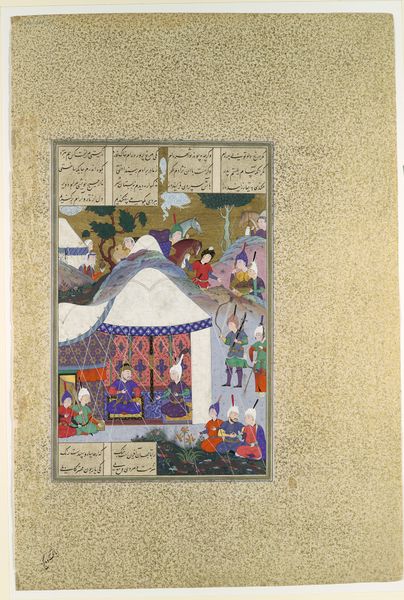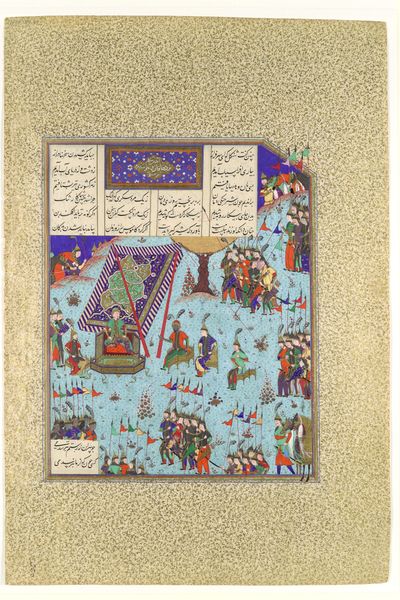
"Buzurjmihr Appears at Nushirvan's Fifth Assembly", Folio 622r from the Shahnama (Book of Kings) of Shah Tahmasp 1505 - 1560
0:00
0:00
tempera, painting
#
narrative-art
#
tempera
#
painting
#
traditional media
#
figuration
#
men
#
islamic-art
#
history-painting
#
miniature
Dimensions: Painting: H. 8 11/16 in. (22.1 cm) W. 8 11/16 in. (22.1 cm) Entire Page: H. 18 5/8 in. (47.3 cm) W. 12 1/2 in. (31.8 cm)
Copyright: Public Domain
Editor: So, this is a painting called "Buzurjmihr Appears at Nushirvan's Fifth Assembly," made between 1505 and 1560. It’s a tempera miniature from the Shahnama. The amount of detail is striking! What do you make of all the figures and symbols here? Curator: It’s a visual record, almost like a carefully coded message. The Shahnama, or Book of Kings, is itself a cultural memory project, retelling the epic history of Persia. Consider how Buzurjmihr’s appearance is rendered. He’s not just entering a room, he’s embodying wisdom and counsel. The way he’s depicted signals his importance. What feelings are evoked in you when you observe the symmetry and structure? Editor: It feels very formal, like a set piece. Almost like everyone has a role to play. Curator: Precisely! Each figure's placement, their clothing, even the colors used, carry meaning. Look at the king enthroned— the colors of royalty, the elevated position. Are these aesthetic choices or deliberate cultural signals? Think about how these visual symbols construct power. The repetition of motifs creates a sense of order, yet it can feel static. Is that intentional? Editor: So the miniature acts like a visual shorthand? All these elements contributing to how viewers understand Persian identity, power dynamics, that sort of thing. Curator: Exactly! This isn't just about illustrating a story; it's about reinforcing a cultural narrative through carefully selected imagery. Editor: It gives you a new appreciation for the choices the artist made. It makes you see it as something far more layered and intricate than just a pretty picture. Curator: Absolutely. Hopefully, you begin to see visual arts from this period not just for their artistic flair but for what they tell us about enduring values, fears, and hopes across time.
Comments
No comments
Be the first to comment and join the conversation on the ultimate creative platform.
